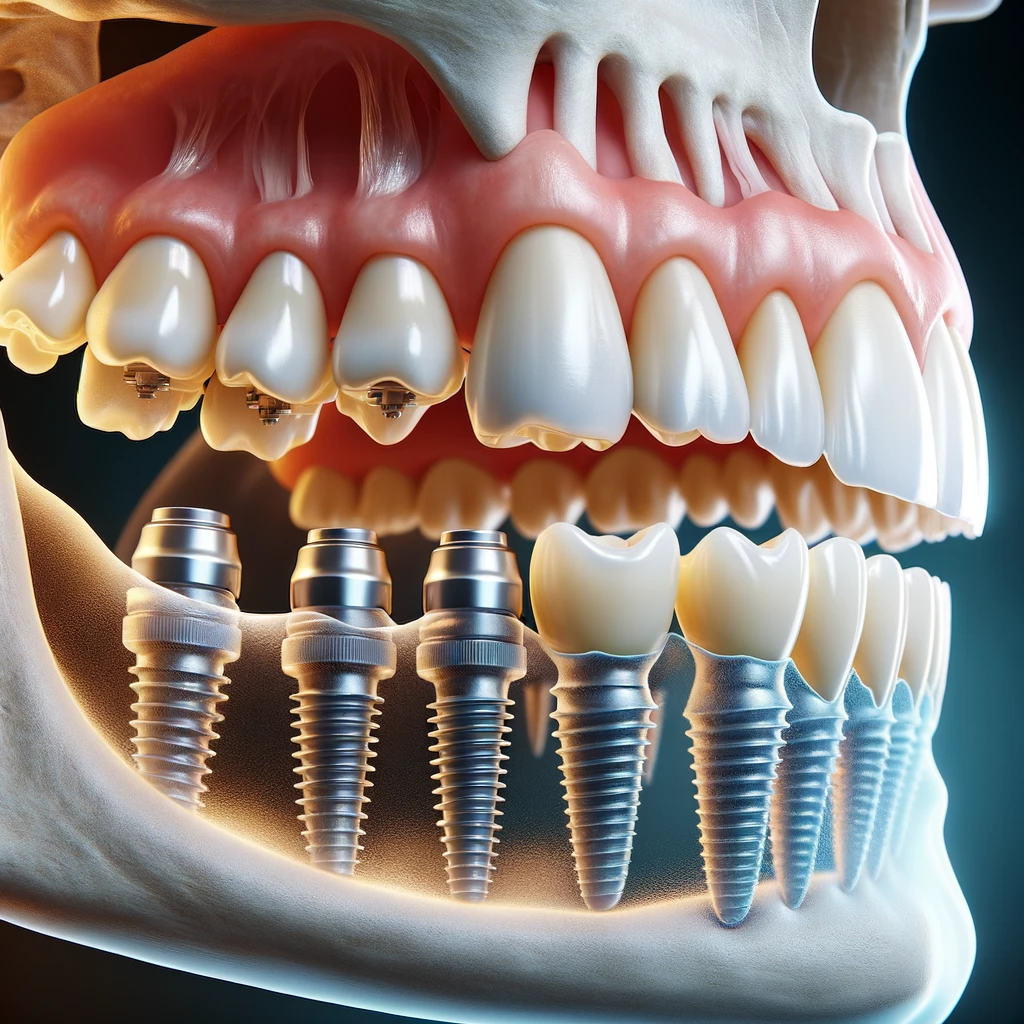A Biased View of Dental Sense
A Biased View of Dental Sense
Blog Article
The Best Strategy To Use For Dental Sense
Table of ContentsWhat Does Dental Sense Do?Fascination About Dental SenseAll about Dental SenseGetting My Dental Sense To Work
are medical tools operatively implanted right into the jaw to recover a person's ability to eat or their appearance. They provide support for fabricated (phony) teeth, such as crowns, bridges, or dentures. When a tooth is lost due to injury or condition, a person can experience problems such as quick bone loss, malfunctioning speech, or modifications to chewing patterns that cause pain.Dental implant systems are composed of an oral implant body and dental implant joint and may also consist of a joint fixation screw. Root canal procedure. The oral implant body is operatively inserted in the jawbone instead of the tooth's origin. The oral implant joint is usually affixed to the dental implant body by the joint fixation screw and extends through gums into the mouth to sustain the connected synthetic teeth
(https://www.find-us-here.com/businesses/Dental-Sense-Miami-Florida-USA/34200016/)Structure of The Oral Implant System selecting oral implants, talk with your oral provider about the potential benefits and dangers, and whether you are a prospect for the procedure. Points to consider: Your total health and wellness is a crucial aspect in establishing whether you are an excellent candidate for dental implants, how much time it will certainly require to heal, and the length of time the dental implant may stay in location.
Smoking cigarettes might impact the healing procedure and reduce the long-lasting success of the implant. The healing process for the dental implant body may take a number of months or longer, throughout which time you typically have a short-lived abutment instead of the tooth. the oral implant procedure: Thoroughly follow the dental health directions given to you by your dental company.
Unknown Facts About Dental Sense
Implant failure can lead to the demand for an additional surgery to take care of or change the implant system. Restores the capability to eat Restores aesthetic look Assists maintain the jawbone from reducing due to bone loss Preserves the health and wellness of the bordering bone and periodontals Aids maintain adjacent (nearby) teeth steady Improves lifestyle Damages to surrounding natural teeth throughout implant placement Injury to the surrounding tissues throughout surgery, such as sinus perforation Injury during surgery (as an example, crack of bordering jawbone) Inadequate feature, such as really feeling like the teeth do not attack with each other normally A feeling that the tooth is loosened or turning in area resulting from a joint screw loosening up Implant body failure (looseness of the implant body) because of systemic infection, which might be most likely in patients with unchecked diabetes because of regional infection in bone and gums supporting the implant body as a result of postponed recovery, which may be most likely in clients who smoke Trouble cleaning the gum tissues around the dental implant, resulting in bad dental hygiene Neglected gum illness Post-surgical numbness as a result of nerve impingement or damages Always notify health and wellness treatment carriers and imaging specialists that you have oral implants before any type of magnetic resonance imaging (MRI) or x-ray treatments.
FDA is not knowledgeable about any type of negative occasions reported for MRI or x-ray procedures with dental implants. Oral implants systems are commonly made from materials that follow global consensus criteria of the International Organization for Standardization (ISO) or ASTM International. These requirements have details of what makes a Read Full Report risk-free material.

An oral implant is a framework that replaces a missing tooth. With screw-like tools, the cosmetic surgeon inserts a dental implant right into the jawbone, and it functions as a support for a fabricated tooth, called a crown. A tool called an abutment connects the synthetic tooth to the dental implant. The crown is customized to fit the individual's mouth and match the color of their teeth.
The Main Principles Of Dental Sense
Some individuals are not eligible for oral implant surgery. It is for oral specialists to run on individuals with: acute illnessuncontrollable metabolic diseasebone or soft tissue illness or infectionIf these concerns are resolved, an individual can have the surgical procedure. In, dental surgeons refrain from operating individuals with: If individuals with any of the above go through dental implant surgical procedure, there is a greater threat of the dental implant failing.

Oral implant surgery is a personalized process. It's not the same for every person. The adhering to offers a basic introduction of what you can anticipate your dentist, oral surgeon, periodontist or prosthodontist to do: Position the dental implant surgically. Offer you time to heal. Affix the message and last crown, bridge or denture.
Next, your doctor will thoroughly place the oral implant into your jaw. If your implant is near the front of your mouth, your dentist will make a momentary tooth for you to use up until you heal.
Dental Sense Fundamentals Explained
Your provider can inform you what to expect in your situation. Throughout the recovery phase, your jawbone should fuse to the oral implant. This procedure, called osseointegration, is critical for security and long-term success. This process can take anywhere from 3 to 9 months. In some instances, it may take longer.
Once your dental implant heals, your dentist can connect the joint (small port post) and your last repair (crown, bridge or denture). This typically takes regarding one hour to complete and might require a 2nd small surgery. You should not feel any kind of discomfort during your oral implant procedure because your provider will utilize medication to numb your gum tissues.
Report this page